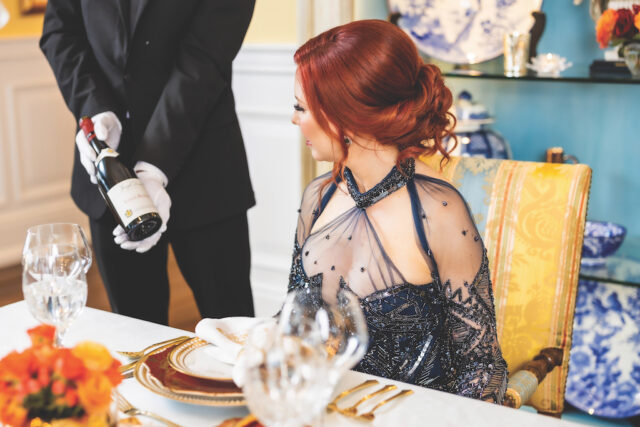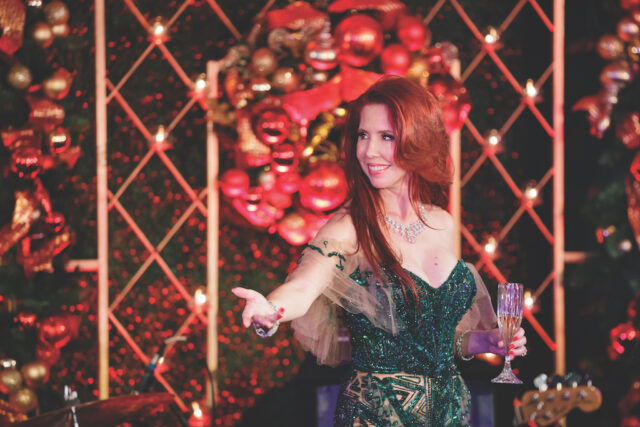
By Dr. Stacie Stephenson
There’s an interesting movement afoot, and unlike a lot of social media health trends with little to no actual health value, this one is exciting. It’s a trend to drink less, or in some cases zero, alcohol. Led by the younger generation, the so-called sober-curious crusade is a result of an increasing awareness of how alcohol is linked to mental health issues and other health problems. Other reasons young people give for decreasing or eliminating alcohol intake are to save money, improve physical health, lose weight or to make a lifestyle change.
According to a 2024 poll of 100 Americans over age 21, 61% of Gen Z and 49% of millennials were actively trying to drink less in 2024. Over all age groups, 41% of people surveyed tried to drink less in 2024. In 2023, 28% of Americans 21 and older said they don’t drink at all. Reasons cited were that they “just don’t want to,” they don’t like the taste of alcohol, they want to improve their physical health, they have addiction concerns or they want to save money. Many also said they believe that younger generations are spearheading the trend.
I believe this is a case where we can learn from the 20-somethings who have championed nonalcoholic beer, wine and spirits, and who have turned mocktails into an art form.
Companies have taken notice. Several celebrities have launched nonalcoholic drinks, and many of the major beer producers have put out nonalcoholic beverages, in response to demand. Online, you can find recipes for mocktails and nonalcoholic spirits like vodka and gin, as well as several brands of nonalcoholic wine. Will they be to your taste? How will you know unless you give them a try?
However, what if you aren’t quite ready to swear off your spiked eggnog, mulled wine or candy cane martinis? Or if you just want to enjoy some wine with dinner, or at least some champagne on your birthday or at a wedding? In my years of practice, my experience has been that it’s hard for people to give up social pleasures like celebratory food and drinks. The nice thing about the sober-curious—or mindful drinking—trend is that it’s not necessarily about going cold turkey. It’s about drinking with more intention, moderation and boundaries.

Mindful Drinking Strategies
Mindful drinking, as I interpret it, means drinking with an awareness of how it feels, both in the moment, and later in the evening or the next day. This means asking yourself, when you drink, Did I really enjoy that? Do I feel satisfied? Is this making me feel good, or do I have a level of discomfort? If I have another drink, will I feel better or worse? What about tomorrow morning?
When you stay in tune with how your body and brain respond to alcohol, you may better recognize that you really don’t like how it feels to have more than a drink or two. Armed with that knowledge, you can then set guidelines allowing you to modify, or eventually phase out the alcohol in your life.
With these goals in mind, here are my best tips for creating more intention, mindfulness and boundaries around alcohol this season.
Two-Drink Rule
The first thing to remember about limiting alcohol consumption is that alcohol lowers inhibitions, so deciding ahead of time how many drinks you will have with dinner or at an event, then committing to abiding by your boundary is important. You will have the most willpower before the first drink, and it will steadily decline with each subsequent drink, so make the rule a habit. Many people who consider themselves mindful drinkers follow the two-drink rule, simply meaning that at any event or meal you will not have more than two drinks—but could certainly choose to have only one, or none at all. Two drinks is the maximum, not a mandate. It is a clear boundary, which becomes even more relevant during the holidays, when there are an abundance of family and company gatherings.
The Rule of Halves
This is my favorite strategy for anything you feel you are doing too much of—drinking alcohol, eating sugar, scrolling social media. Here’s how it works: Think about what you want to reduce. Let’s say it’s your nightly two glasses of wine, which don’t leave you feeling your best in the morning. The rule of halves simply means having half of what you would have partaken in. So tonight, you will enjoy one glass of wine instead of two. The beauty of this strategy is that you still get to enjoy your indulgence, but become more intentional about it, choosing to reduce but not eliminate, because cold turkey can be punishing. If you want to take it further, after you are accustomed to having one glass of wine at dinner, you can cut it in half again—either half a glass, or one glass every other night. Once this feels standard, you can cut the amount in half again—and again, and again, until you’ve phased out your indulgence completely, or limited it to special occasions.
Alternate each drink with water.
You’ve probably heard this one before, because it’s good advice—after every alcoholic drink, drink a full 16-ounce glass of water. If you haven’t finished the water, you don’t order another drink, period.
Don’t drink on an empty stomach.
Having some protein and fiber in your system before you start drinking can help slow the release of alcohol into your bloodstream, so the effect feels less extreme and can help you to maintain your self-discipline. It also helps to be too full of good food to drink more.
Live a healthful lifestyle.
When you set the tone for your day, not to mention your whole life, by eating nutritious food in moderation, exercising, getting enough sleep, and spending quality time with friends and family, you may feel less inclined to overdo alcohol. You won’t want to mess up that good feeling you have from living according to your body’s needs and your personal values.
Be aware of peer pressure.
Peer pressure is real, even for adults. When everyone else is drinking, it can be hard to be the one who stops (or never starts). Yet, if your friends love to go out and drink a lot, it can be hard to say no, and if not drinking means not hanging out with your friends, that doesn’t sound like a good trade-off. Instead of sacrificing your friends, give up the buzz. You can always order a club soda with lime, or ask for a mocktail or a nonalcoholic beer. And won’t you feel great when you wake up without a headache, ready to embrace a new day of healthful living?
I encourage you to try mindful drinking or get sober-curious. We know that alcohol is not a friend to good health. According to the World Health Organization, alcohol consumption has been associated with more than 200 diseases, injuries and other serious health conditions, and is directly related to heart diseases, liver diseases, tuberculosis and several types of cancer, as well as mental health issues such as depression, anxiety and addiction. There is nothing healthful about that. I hope you will join me in choosing to live your best, most vibrant life by dialing back your alcohol consumption, even if you still enjoy a drink or two on special occasions. Cheers to that! drstaciestephenson.com





